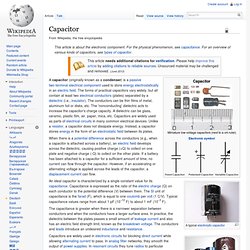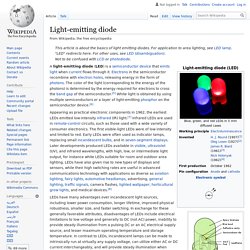

555 timer. Capacitor 100uf. Capacitor. 4 electrolytic capacitors of different voltages and capacitance Solid-body, resin-dipped 10 μF 35 V tantalum capacitors.

The + sign indicates the positive lead. When there is a potential difference across the conductors (e.g., when a capacitor is attached across a battery), an electric field develops across the dielectric, causing positive charge (+Q) to collect on one plate and negative charge (-Q) to collect on the other plate. 2.7 k ohm resistor. 1.0 k ohm resistor color. Resistor 330 ohm. Light-emitting diode. Parts of an LED.

Although unlabeled, the flat bottom surfaces of the anvil and post embedded inside the epoxy act as anchors, to prevent the conductors from being forcefully pulled out via mechanical strain or vibration. An LED is often small in area (less than 1 mm2) and integrated optical components may be used to shape its radiation pattern.[5] Appearing as practical electronic components in 1962,[6] the earliest LEDs emitted low-intensity infrared light. Infrared LEDs are still frequently used as transmitting elements in remote-control circuits, such as those in remote controls for a wide variety of consumer electronics.